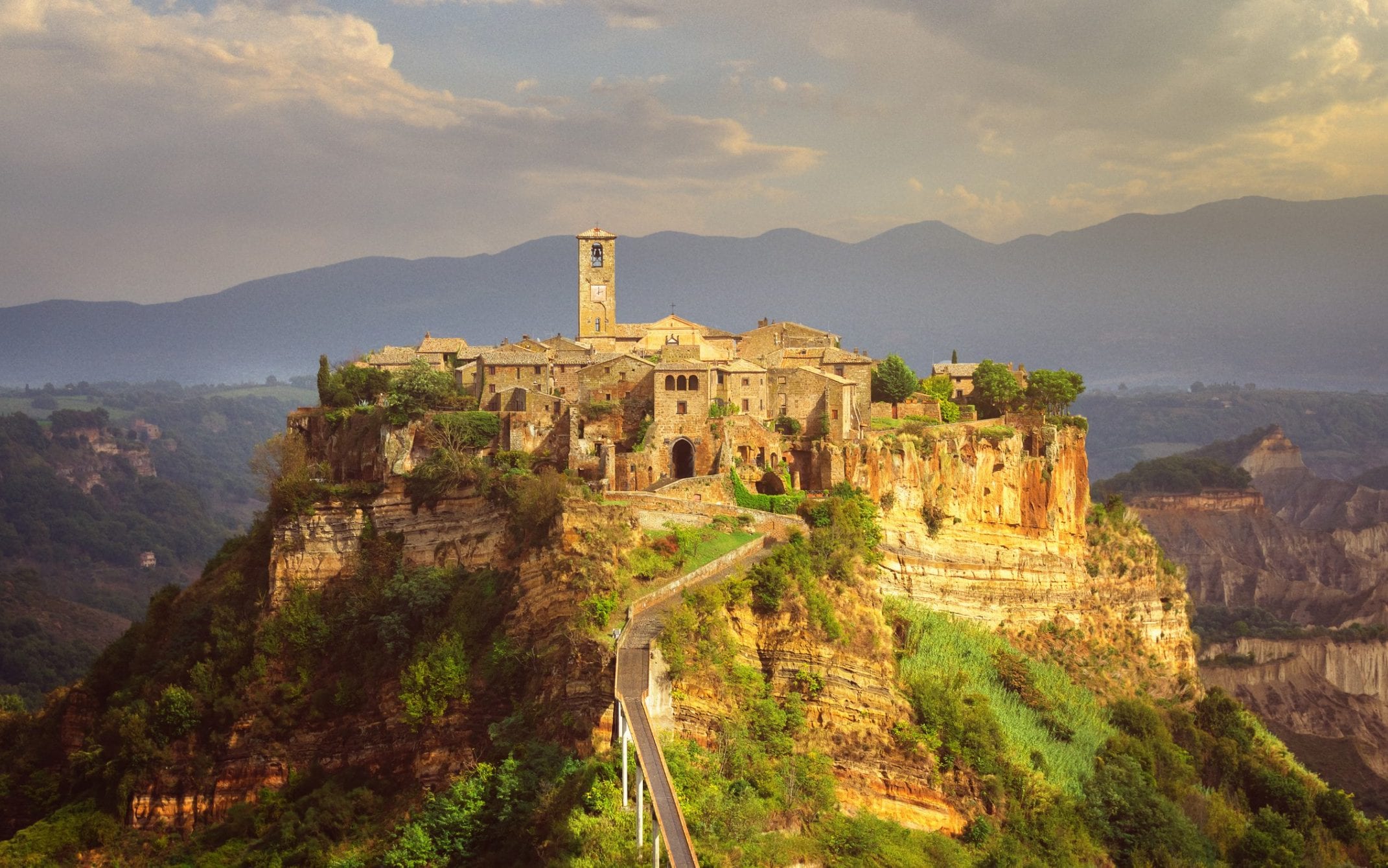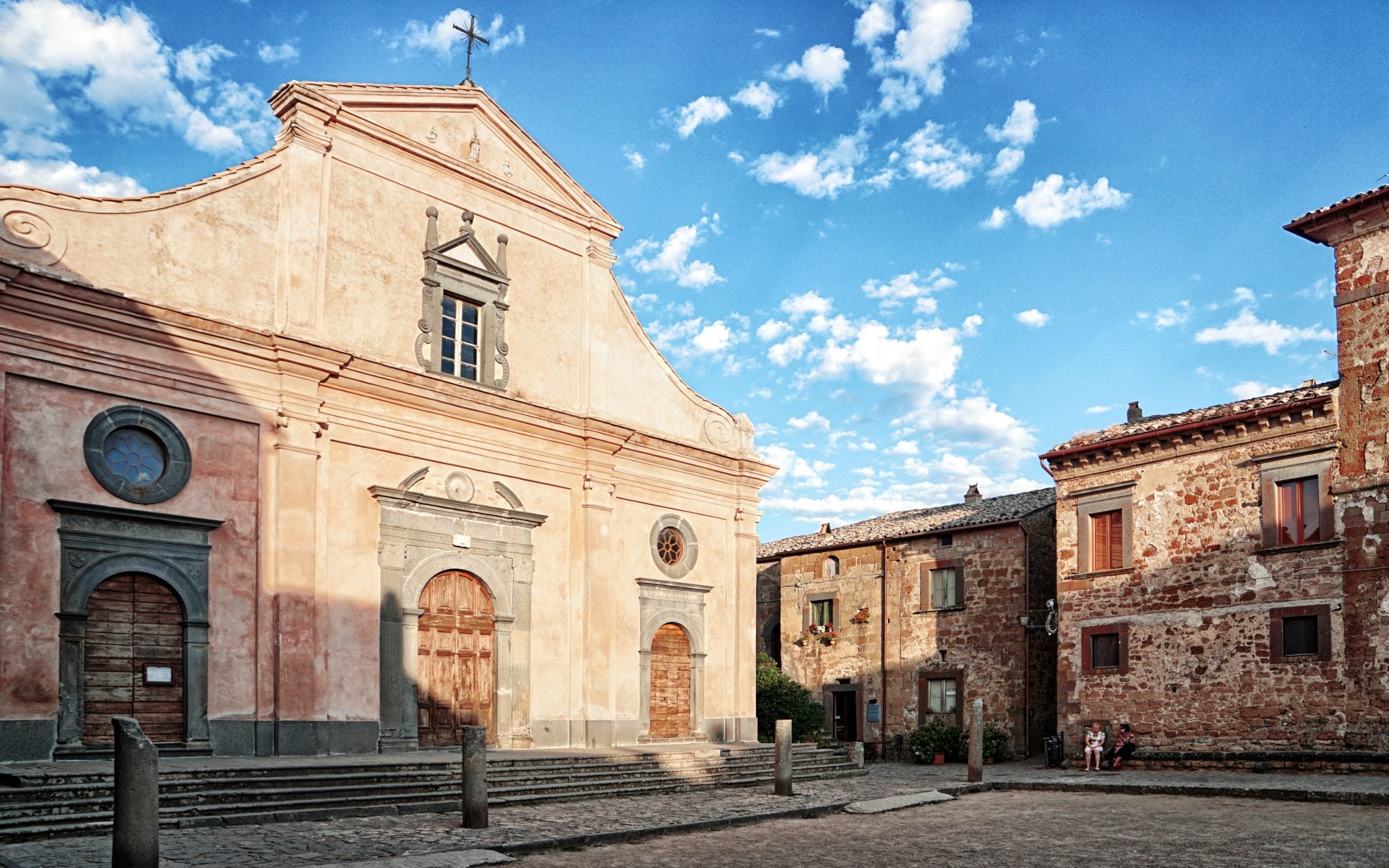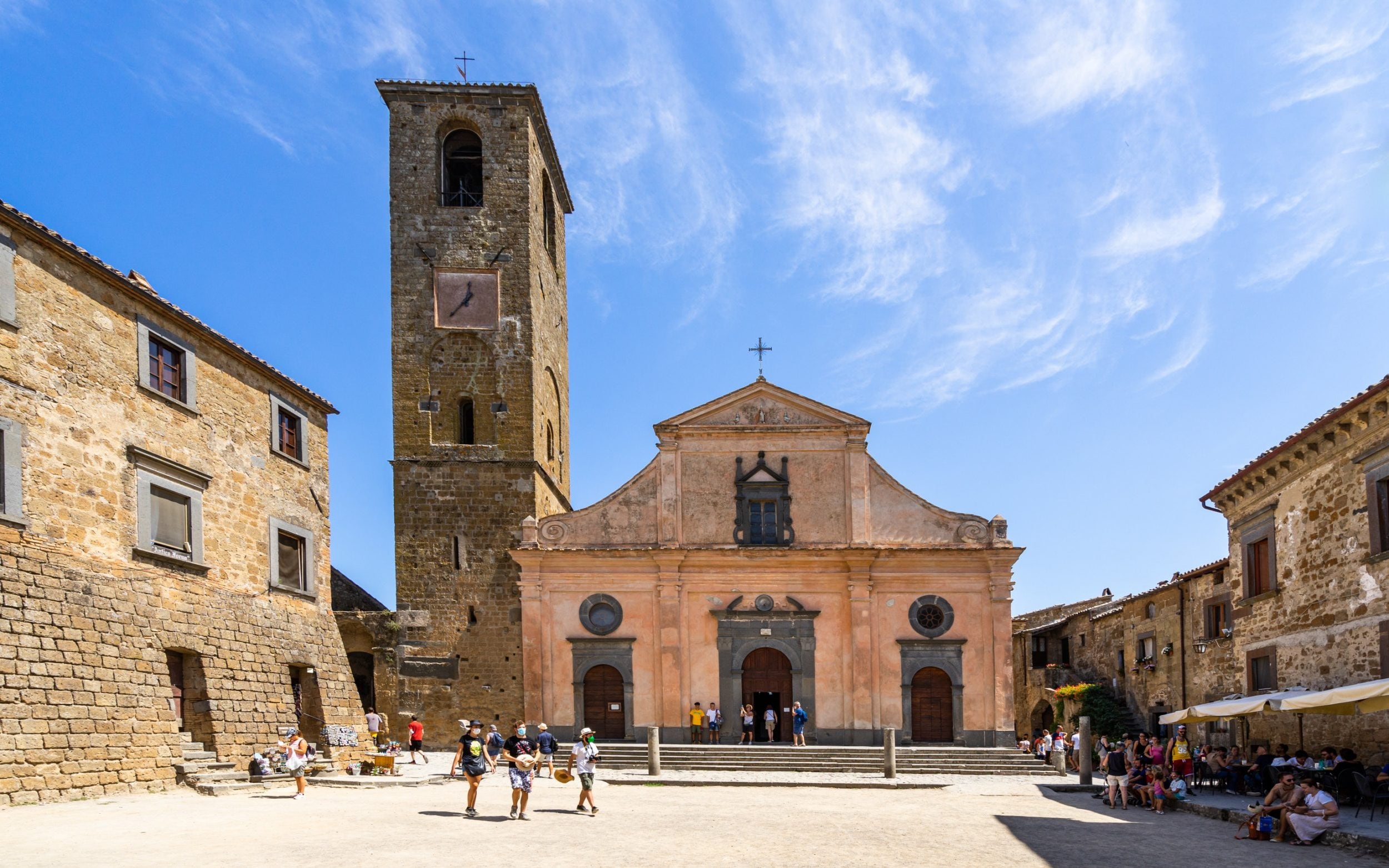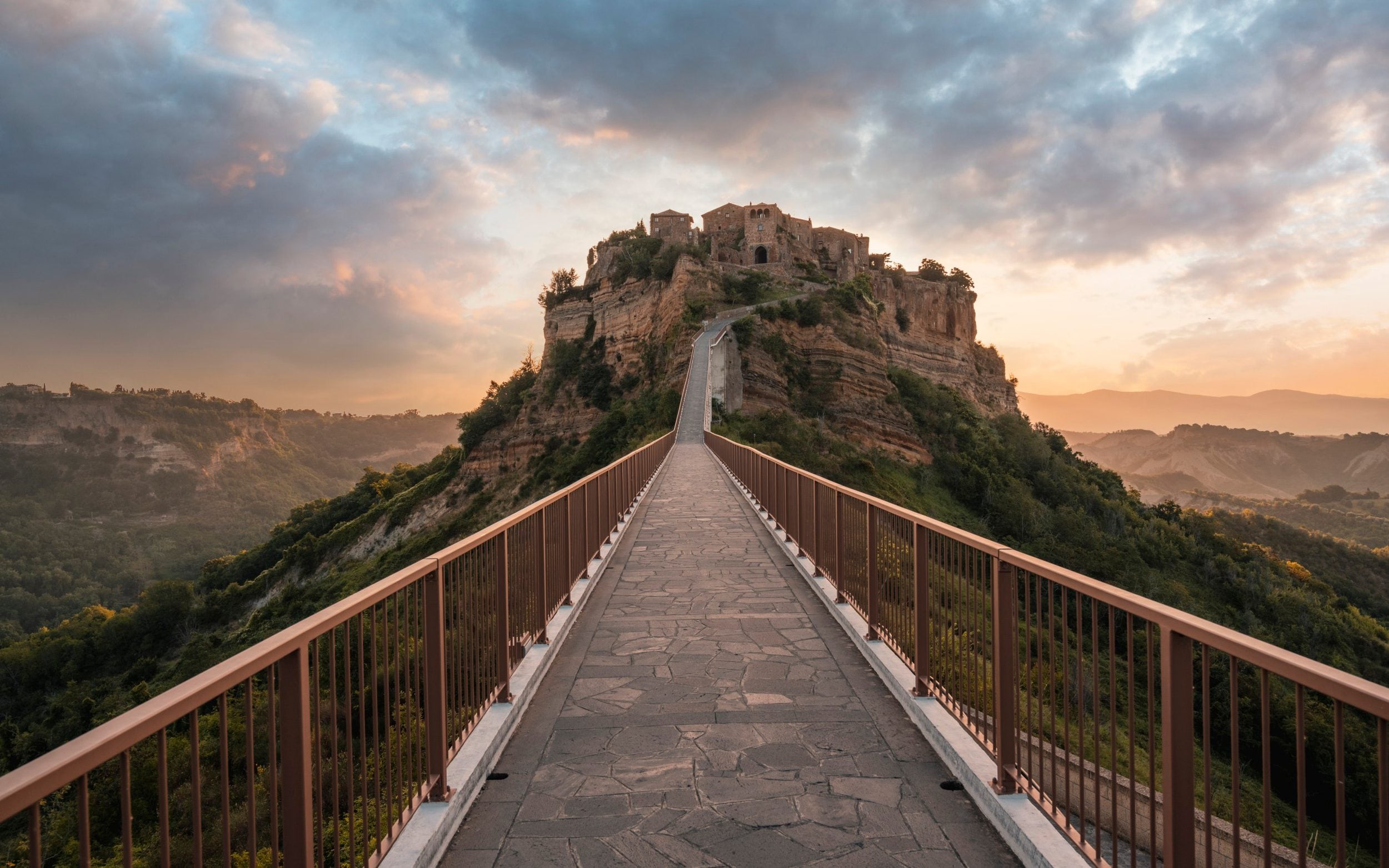
.
or “the dying city,” so-named for its dwindling population and its precipitous location — for hundreds of years, the town, set in the province of Lazio, about midway between Viterbo and Orvieto, has been slowly eroding into the valley below. Built on a plateau of volcanic tuff in a geologically unstable area, Civita faces a certain inevitability — one day, the forces of nature will win out, and the dying city will cease to be.
For now, though, Civita di Bagnoregio endures — and entices. It remains one of the most romantic, enigmatic settings in Italy, reached only via a steep, crazily scenic pedestrian bridge connecting Civita to the larger town of Bagnoregio. Once inside the town walls, it takes maybe 10 minutes to walk the length of the town. Yet this crumbling, postage stamp-sized village with only a dozen or so full-time residents draws as many as a million visitors per year, who each pay €5 each to access the bridge.
. “For those who live in modern cities, it’s simply unlike anything they’ve ever seen. And even for Italians used to ancient stone villages, there are few places that feel quite so much like stepping into the past.”

Take a moment to catch your breath under the shade of Porta Santa Maria, the main gate into the town. From there, it’s a short walk to Piazza San Donato, Civita’s main square and very much the living room of the village. It’s unique among Italian piazzas in that it’s a dirt surface, rather than stone or marble, and truer to its medieval state. Inside the pretty Church of San Donato, which was first built in the 400s and remodeled in the 1500s, there are remains of precious frescoes, several carved stone altarpieces, and a wooden crucifix from the 1400s, said to be crafted by a pupil of Donatello.
, a newish initiative of three young siblings, who created a line of perfumes and cosmetics inspired by the town. They also rent nicely renovated rooms in the village, which offer access to a panoramic herb garden from which ingredients for their products are sourced.
Also on the square, the Geological and Landslide Museum offers an interesting look at how Civita was formed, how it’s deteriorated over the centuries as a result of earthquakes, landslides and erosion, and efforts undertaken to slow its eventual demise. Equally fascinating are the museum’s collection of historic photos, which show how the city’s profile has changed over the years.

Further on, Antica Civitas is a private museum of sorts, set in a series of underground caves first dug out by the Etruscans. On a short, self-guided tour, antique photos, tools and household implements illustrate how the caves were used for shelter and food storage over the millennia.
At the literal end of the road, the well-kept Giardino del Poeta, or Garden of the Poet, is another private entity, where a small donation grants access to a delightful mix of flowering plants and trees, as well as sweeping panoramas right on the edge of the village.
, we leafed through her album of family photos, newspaper clippings and vintage images, including of donkeys carrying supplies along a precarious path — the only way in and out of town after the WWII bombing of the causeway that connected the old city to the newer one.
The 1965 construction of a stable footbridge, which has since been replaced, reopened a long-forgotten Civita to the world. Wealthy Italians bought up Civita’s abandoned houses for a song and renovated them as holiday homes. Today, most residents are part-timers, like Alberto Salvatore, a lawyer from Florence who has spent two weeks of every month here for the last 30 years. “It’s a choice of time,” he said of Civita’s slow rhythm of life. “I leave behind the frenetic part of my life when I come here.”

Still, living out in Civita means going into Bagnoregio for everything — there are no stores here other than souvenir shops, so even a loaf of bread or a pack of cigarettes requires a trip to town. Residents, business owners and employees are allowed to take mopeds or scooters back and forth, and there are small quad vehicles that transport supplies, as well as residents or visitors who have difficulty walking. Everyone else makes the journey on foot.
Settini, who lives in Bagnoregio and commutes to her restaurant on a perky red Vespa, remembers Civita before the tourism boom began in earnest in 2014, when the then-mayor decided to charge admission. (Elsewhere in Italy, Venice and the Cinque Terre have since followed suit.) On the busiest days, up to 10,000 visitors may pour into the tiny town. “It’s exhausting,” she admitted. “But this place has given me so much.”
Getting there
, the Italian flag carrier, flies from London Gatwick to Rome Fiumicino Airport from £169 return.
has rooms from €130 per night, including breakfast and is situated on the main square in Civita di Bagnoregio.
A rental car or private transfer is required to reach Civita di Bagnoregio. The walk from the closest parking area to the town takes about 20 minutes, which can feel a lot longer on a hot summer day.
Read about 15 other charming hilltop towns in Italy .
Play The Telegraph’s brilliant range of Puzzles - and feel brighter every day. Train your brain and boost your mood with PlusWord, the Mini Crossword, the fearsome Killer Sudoku and even the classic Cryptic Crossword.


Post a Comment
0Comments